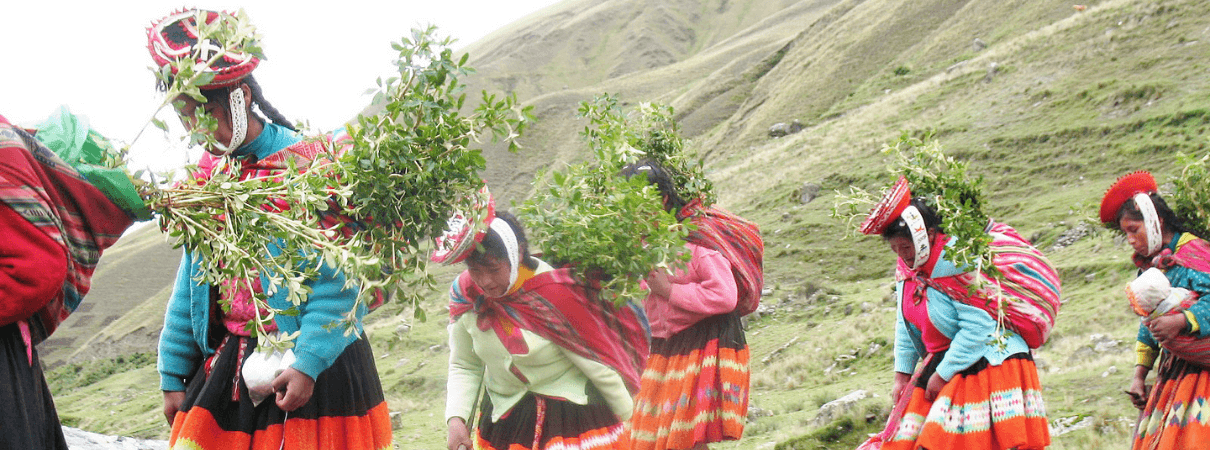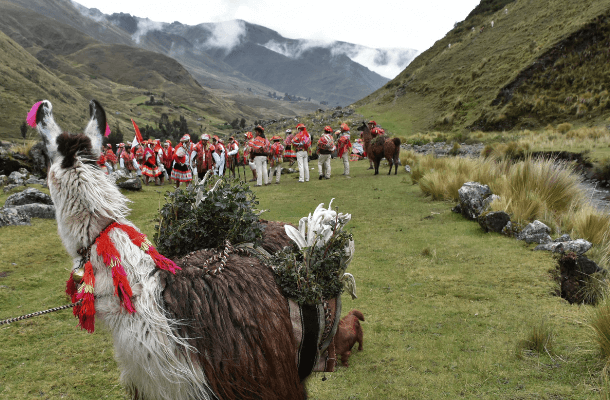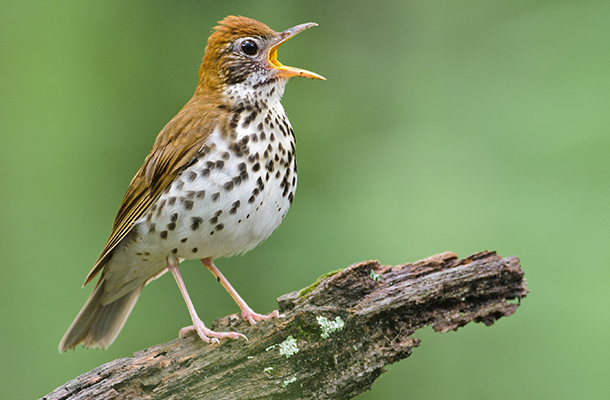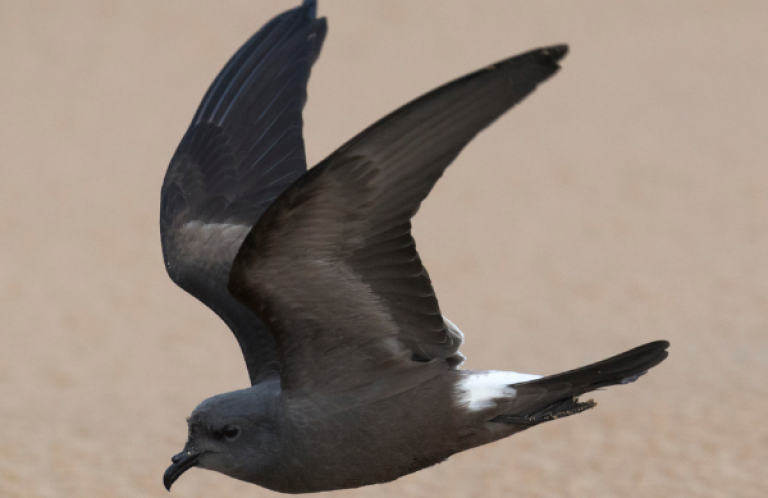Nearly 7 Million Trees Planted: Celebrating 20 Years of Reforestation Efforts

Local women carry Polylepis tree saplings up a mountain to be planted in the Vilcanota range of the Peruvian Andes. Image Credit: ECOAN
(April 28, 2022) Imagine tens of thousands of saplings carried up windswept peaks by women, men, children, and even llamas, then planted in a single day on nearly vertical mountain slopes. This annual event in the Peruvian Andes is just one example of the tree-planting efforts American Bird Conservancy (ABC) has supported over the past two decades — and one of the successes we're celebrating as we reach an important habitat restoration milestone: 20 years of tree planting representing nearly 7 million trees planted.
“Planting trees to restore habitat is one of the most concrete steps we can take to help birds,” said George E. Wallace, Director of International Programs and Partnerships at ABC. “Habitat loss is a leading driver of bird declines. We can protect the habitat that remains, but we can also increase available habitat through restoration.”
Across the Americas, many bird species are in decline. In the U.S. and Canada alone, close to 3 billion birds have been lost since 1970. Since one of the biggest culprits is habitat loss, ABC has dedicated itself to supporting reforestation efforts that provide resident and migratory birds with suitable habitat throughout their life cycles.
Incredible progress has been made since the first ABC-supported tree-planting project began in the Peruvian Andes in 2002. In Peru, more than 3 million trees have now been planted across 4,000 acres — enough to fill New York City's Central Park five times over. Altogether, tree-planting projects supported by ABC in 14 additional countries, including the U.S., have put a total of 6.8 million trees in the ground across 24,300 acres. That's as many trees as there are people in the state of Indiana.

Cerulean Warbler. Photo by Jacob Spendelow
Reforestation is a conservation tool that provides a win for birds, people, and the climate alike. Endangered Andean species, like the Gray-bellied Comet, Jocotoco Antpitta, and Royal Cinclodes, could face extinction without efforts with local NGOs and communities to restore and protect these birds' habitats. Trees planted in the Andes and elsewhere in Latin America and the Caribbean also ensure that Neotropical migrants like the Cerulean Warbler and the Olive-sided Flycatcher can find a safe haven on their wintering grounds.
Tree planting can even aid birds thousands of miles away by sequestering carbon and acting as a natural tool to fight climate change. The quarter-million trees planted with ABC support in 2021, for instance, will be capable of absorbing up to 6,000 tons of carbon a year upon reaching maturity. Trees can also help local communities fight erosion by keeping soils healthy and preventing landslides, and conserve and filter water. Coffee and cacao grown in the shade of native trees create more diverse landscapes that support far more birds and other wildlife than sun-grown monocultures.
ABC's native and agricultural tree-planting efforts over the last 20 years stretch from Maui to Minnesota and many places in between. Here are a few examples:
Bringing Back the World's Highest Forests in the Andes

A group of locals, including a llama and dog, gather to plant tree saplings in the Vilcanota range of the Peruvian Andes. Image Credit: ECOAN
Referenced in the opening of this article, ABC's flagship reforestation project is a partnership with Asociación Ecosistemas Andinos (ECOAN) that has, since 2002, supported efforts by Indigenous communities in Peru to plant native Polylepis trees. ECOAN has worked with villages in the Vilcanota range of the Peruvian Andes to plant more than 1.6 million Polylepis trees on more than 2,000 acres of land, providing a lifeline for Polylepis specialist birds such as the Critically Endangered Royal Cinclodes and the Endangered Ash-breasted Tit-Tyrant and White-browed Tit-Spinetail. These forests also protect watersheds that not only provide local farmers with water, but also communities miles downstream.
Polylepis trees are special. These 21 members of the rose family are the highest-growing flowering trees in the world, found at up to 16,400 feet (5,000 meters) above sea level (that's three times the elevation of Denver, Colorado). Undisturbed Polylepis forests tend to have a fairytale-like quality, with twisted trunks and gnarled branches covered in mosses and lichens.
Unfortunately, undisturbed Polylepis forests now cover less than 3 percent of their former range due to threats like overgrazing, burning to clear land, and harvesting for firewood. ECOAN, with support from ABC, has enlisted the help of local communities to bring back these important native ecosystems.
The biggest effort comes once a year in Vilcanota, Peru, during the Queuña Raymi festival, a tradition begun in 2014. The celebration brings local community members together to plant tens of thousands of trees. Earlier in 2022, ABC supported the Patacancha Indigenous community's successful single-day planting of 62,150 trees. That's enough trees to fill every seat in the Chicago Bears football stadium.
To ensure that local communities have access to firewood while maintaining their important native forests, ABC has also supported planting of fuelwood plantations on degraded landscapes in lower-elevation valleys. So far, ABC has supported the planting of 311,038 trees for firewood on 528 acres.
ECOAN is expanding this initiative through an alliance called Acción Andina, which seeks to restore Polylepis woodlands throughout the Andes.
Tree Fences, Silvopasture, and Shade-Grown Crops

Wood Thrush. Photo by Ed Schneider
About 50 percent of ABC's tree-planting efforts involve reforestation to restore native forests, but the organization also supports tree planting on grazing land, called “silvopasture.” These efforts help ensure the landscapes that give us hamburgers and other food are also providing food and shelter for birds, including wintering Neotropical migrants like the Black-and-white Warbler, Ruby-throated Hummingbird, and Wood Thrush.
ABC's partners have planted 300,612 trees over 1,182 acres on grazing land in Colombia, Peru, Ecuador, and Nicaragua. Incorporating trees into grazing land is not only good for birds — studies show that it also benefits livestock. Cattle, sheep, and other stock often snack on leaf litter, and shade reduces stress on animals. Dairy cattle raised with access to shade even produce more milk than those without.
One aspect of silvopasture involves planting trees to act as “living fences.” Partners in Peru have planted 452,852 sturdy, fast-growing trees like alder that support 712 miles of fencing — that's enough fence to wrap around the entire shoreline of Lake Ontario. These fences act as bridges between patches of forests, supporting hundreds of resident and migrant bird species moving through the area.
ABC also supports “shade agriculture,” including coffee, cacao, and cardamom grown under shade trees in countries like Colombia, Guatemala, Honduras, and the Dominican Republic, often through impact investing projects. Partners work with farmers to restore and enhance their farms using shade trees and to manage their crops using organic pest management techniques. ABC helps farmers find buyers for their goods, to help ensure their businesses are sustainable and profitable. In total, ABC has supported the planting of 444,139 crop plants under 305,769 shade trees over approximately 2,932 acres.
“By attracting private capital to restore degraded lands in Latin America and the Caribbean, ABC will be able to plant hundreds of thousands of additional trees at a faster pace on thousands of acres of important bird habitats,” said Andrés Anchondo, the Associate Director of Impact Investment in Latin America and the Caribbean at ABC.
Havens for Imperiled Species for Years to Come

Gray-bellied Comet. Photo by Manual Roncal-Rabanal.
Whether through silvopasture or native tree planting, ABC focuses on providing food and shelter to the species most vulnerable to extinction. Another project in Peru, for instance, focuses on restoring forest and food plants for a beautiful long-tailed hummingbird called the Gray-bellied Comet. ABC expects to surpass 100,000 trees planted for this Endangered species in Peru's Río Chonta Valley by the end of the year. An additional threatened resident Peruvian hummingbird, the Purple-backed Sunbeam, is also benefiting from a community-supported tree-planting effort.
Beyond the examples above, ABC also supports habitat restoration work for the Critically Endangered Araripe Manakin and Endangered Lear's Macaw in Brazil, and the Critically Endangered Palila and Kiwikiu in the state of Hawaiʻi. Also in the U.S., ABC has planted more than 37,000 hardwoods and conifers in the Great Lakes region to create habitat resilience against the Emerald Ash Borer invasion and to help beloved migrants like the Golden-winged Warbler.
When it comes to planting trees, in spite of our 7-million-tree milestone, ABC has only just begun. In 2022, we are already expecting to plant at least 178,750 trees in seven countries. We look forward to continuing to plant trees for years to come, helping communities across the Americas save a place for birds – and save birds in the process.
###
American Bird Conservancy is a nonprofit organization dedicated to conserving wild birds and their habitats throughout the Americas. With an emphasis on achieving results and working in partnership, we take on the greatest problems facing birds today, innovating and building on rapid advancements in science to halt extinctions, protect habitats, eliminate threats, and build capacity for bird conservation. Find us on abcbirds.org, Facebook, Instagram, and Twitter (@ABCbirds).
Media Contact: Jordan Rutter, Director of Public Relations| jerutter@abcbirds.org | @JERutter


















































